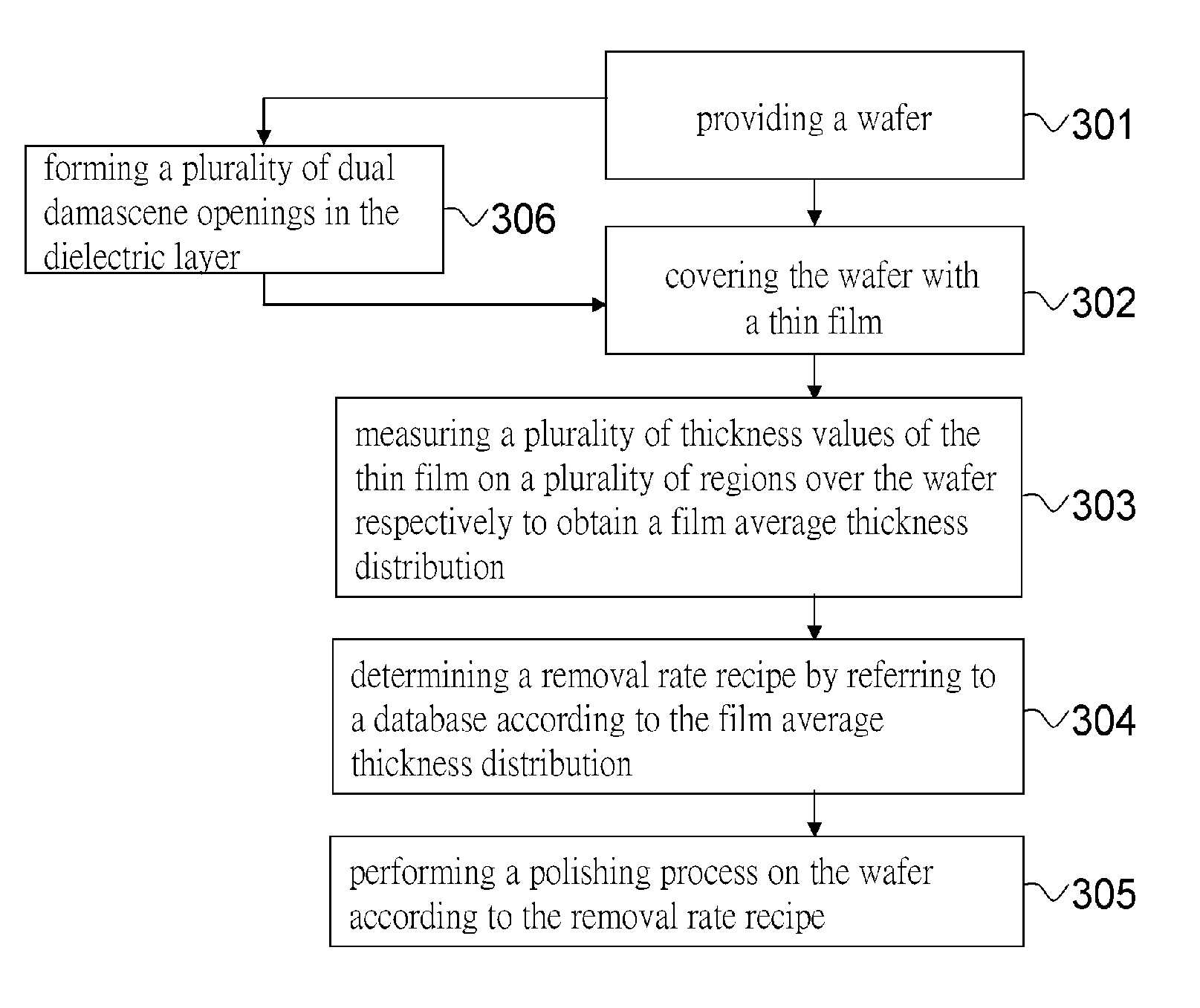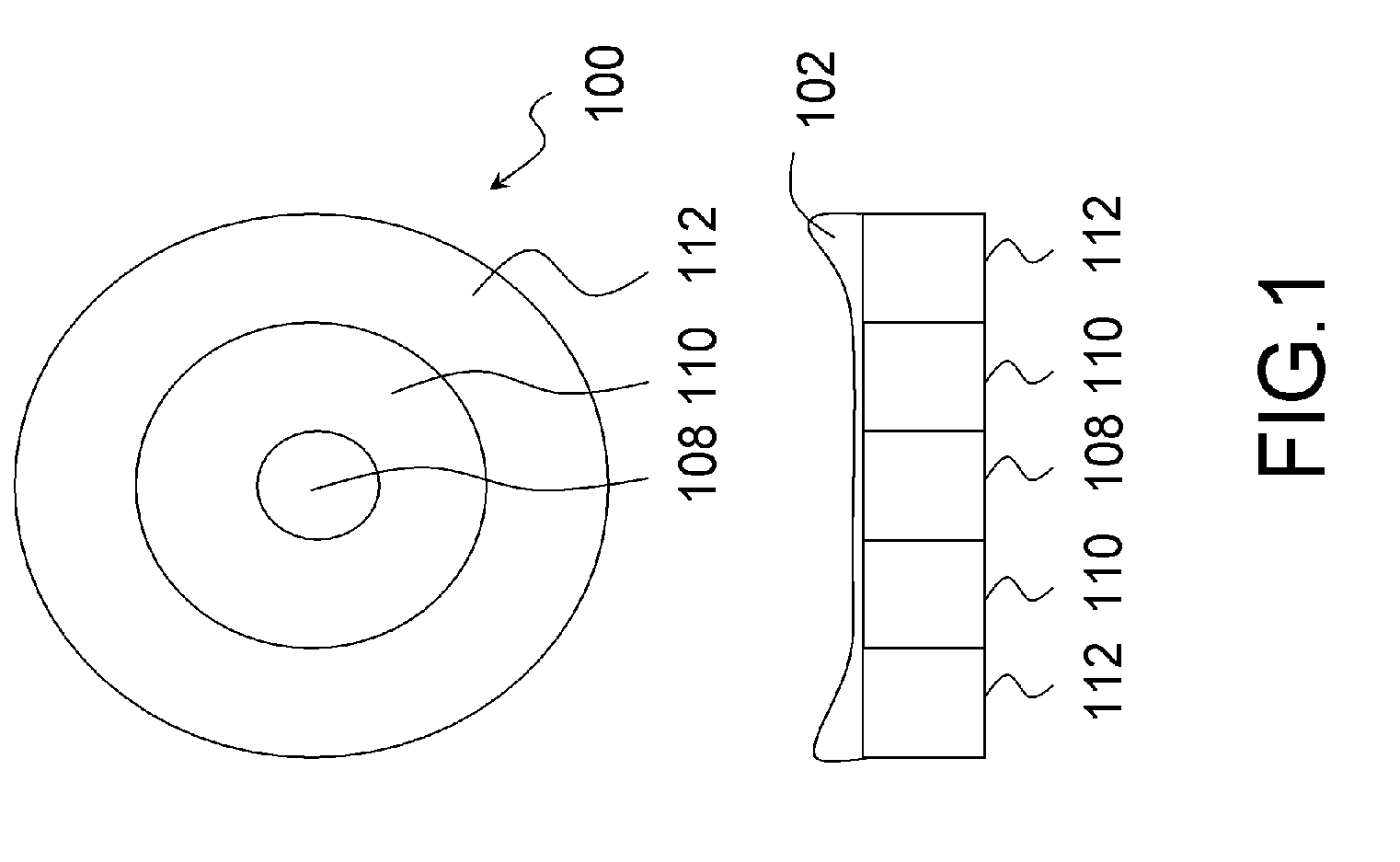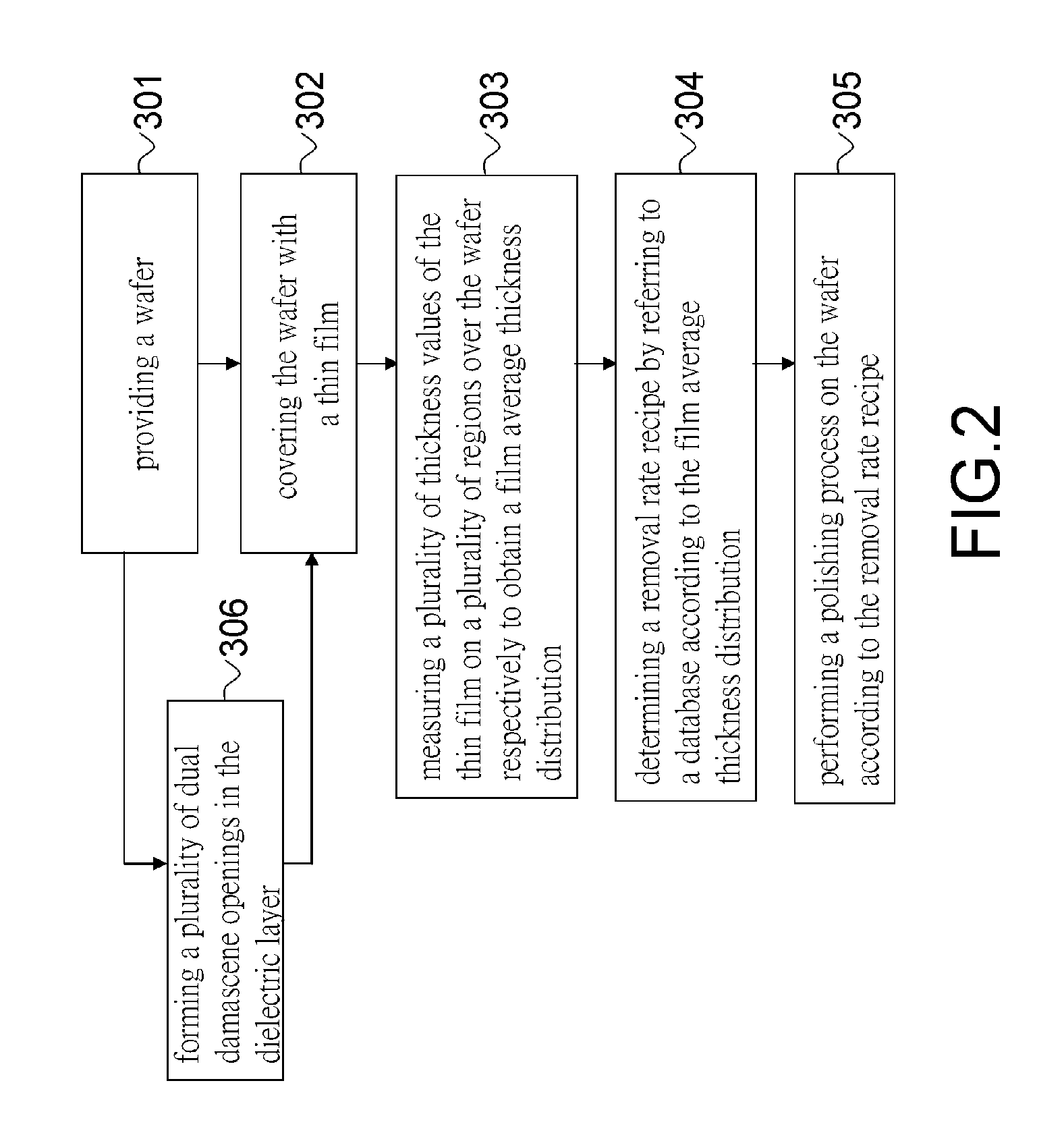Method for controlling polishing process
a polishing process and polishing technology, applied in semiconductor devices, solid-state devices, semiconductor/solid-state device testing/measurement, etc., can solve the problems of copper remaining on the edge of the wafer, over polishing, and dishing around the center of the wafer, so as to increase the uniformity of the thin film layer
- Summary
- Abstract
- Description
- Claims
- Application Information
AI Technical Summary
Benefits of technology
Problems solved by technology
Method used
Image
Examples
Embodiment Construction
[0033]FIG. 1 shows a top view of a wafer 100 and a cross-section view of the wafer 100 along line I-I′ according to a preferred embodiment of the invention. FIG. 2 is a flow chart illustrating a method for controlling a polishing process according to one embodiment of the present invention.
[0034] As shown in FIG. 1 and FIG. 2, in the step S301, a wafer 100 is provided. The wafer 100 can be, for example but not limited to, a 12 inch wafer. In the step S302, a thin film 102 is form to cover the wafer 100. The thin film 102 can be, for example but not limited to, made of copper. The method for forming the thin film 102 can be, for example but not limited to, a electroplating process or a chemical vapor deposition process.
[0035] In the step S303, several thickness values of the thin film 102 are obtained by measuring the thickness of the thin film 102 on several regions of the wafer 100 so as to obtain a film average thickness distribution 104. The “film average thickness distribution...
PUM
| Property | Measurement | Unit |
|---|---|---|
| thickness | aaaaa | aaaaa |
| thickness distribution | aaaaa | aaaaa |
| thickness distribution | aaaaa | aaaaa |
Abstract
Description
Claims
Application Information
 Login to View More
Login to View More - R&D
- Intellectual Property
- Life Sciences
- Materials
- Tech Scout
- Unparalleled Data Quality
- Higher Quality Content
- 60% Fewer Hallucinations
Browse by: Latest US Patents, China's latest patents, Technical Efficacy Thesaurus, Application Domain, Technology Topic, Popular Technical Reports.
© 2025 PatSnap. All rights reserved.Legal|Privacy policy|Modern Slavery Act Transparency Statement|Sitemap|About US| Contact US: help@patsnap.com



